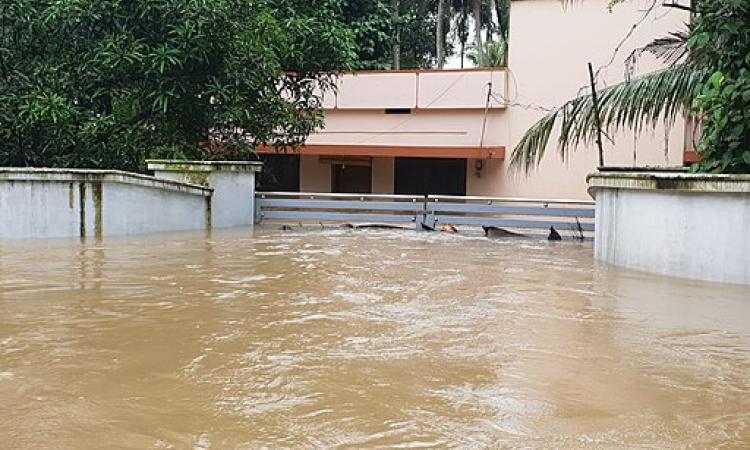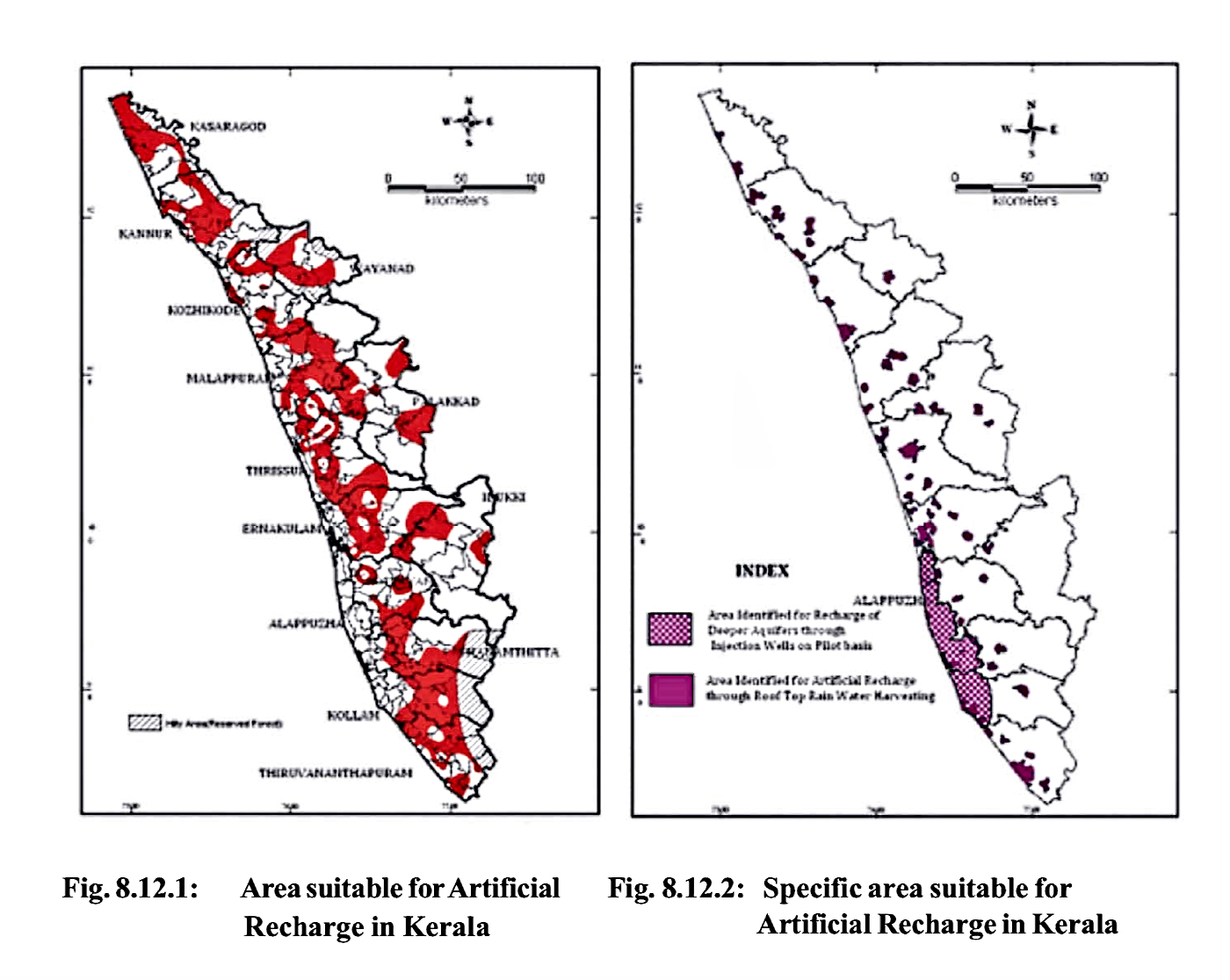
If the devastating floods were not enough, the state of Kerala is witnessing further signs of environmental neglect and greedy exploitation of natural resources. There has been a drop in the water level, particularly in those rivers which were flooded recently. It is also reflected in the drying and caving of wells in different parts of the state. The falling water levels have triggered speculation about a possible drought-like situation in the state, especially if the north-east monsoon, expected later this year, does not compensate the loss. People fear that the drop in the water level in water bodies may trigger a severe drought, leading to drinking water shortage in the coming months. This fear is compounded by the sudden rise in temperatures and deaths of earthworms.
The unprecedented floods, facilitated by the sudden release of waters from almost all the dams in the state, have removed the topsoil in the upland areas and its removal has almost ruined the water holding (storage) capacity which sustains flow in the rivers in dry months. Some people fear that the devastation has been facilitated by the impact of climate change at the macro level.
Excess rainfall followed by rain deficit
Kerala receives rain from the south-west and the north-east monsoons. The maximum average rainfall (3934 mm) is received in the Kuttiyadi basin situated in the northern part of Kerala while the minimum rainfall (1387 mm) is received in the Amravati basin, situated in the rain shadow area. This year, between June and August (almost three months), Kerala received 36 percent more rainfall while in September, the rainfall is inadequate and merely 14 percent of the month’s average (56 mm) has been received. Even if the deficit is met, it is unlikely to rejuvenate water bodies and rivers. However, the north-east monsoon may reduce the drought-like situation to some extent. The Kerala government is worried about the situation and has instructed the Centre for Water Resources Development and Management to submit the report on the causes of the water-level decline in water bodies.
Out of 44 important rivers in the state, 41 flow in the west direction while three are east-flowing rivers. The estimated monsoon run-off is nearly 70,165 million cubic metres. The groundwater use in the state till 2013 was 47 percent. In these five years, the use must have increased substantially. The increase in groundwater use must have facilitated further lowering of post-monsoon water table. This decline must have increased the area needing an artificial recharge. It may be recalled that the Central Ground water Board (GOI), in 2013, had published a Ground Water Master Plan for Artificial Recharge in the country. This plan shows that nearly 28 percent area (10,849 sq km) of Kerala needs an artificial recharge. Suitable areas for artificial recharge and for locating injection wells and roof water harvesting are given in the maps below:

Source: CGWB Ground Water Master Plan for Artificial Recharge, 2013
The artificial recharge campaign has not been undertaken in the country and therefore it is obvious that area needing artificial recharge must have increased where efforts have not been made.
Turning to water sources for solution
Rivers in Kerala have two water sources. The first source is rainfall. This is available twice a year. The rainfall source is SW and NE monsoon. Similarly, groundwater is also available twice a year but rivers receive groundwater only when the water table is above their bed level. The moment it drops below the bed level, the river dries.
The drop in water level in rivers and water bodies in Kerala appears to be due to the drop in the water table. This drop will be known soon as the water table is monitored in 1668 observation wells in the state. What appears to be the cause is non-revival of the water table due to inadequate monsoon recharge. The second reason could be due to poor artificial recharge initiatives. If we look into the theoretical aspect of flow decline, then we have two situations:
- Flow decline due to natural reasons
- Flow decline due to human interference
The natural drop in flow is due to the discharge of groundwater through springs and rivers and also if the post-monsoon drop in the water table is not replenished adequately, then the water level does not reach river bed level and the river is not rejuvenated. Since a study has been ordered, the facts will be known soon. The flow decline due to human interference is observed only when heavy pumping is done from the river and the groundwater source or due to the blockage of natural flow in water bodies. Since flow decline has occurred soon after rains, human interference could not be a cause.
We can hope that the study will unfold the cause and guide the nation to deal with such situations in the future.
Disclaimer: The views and opinions expressed in this article are those of the author/s and do not necessarily reflect the policy or position of India Water Portal.